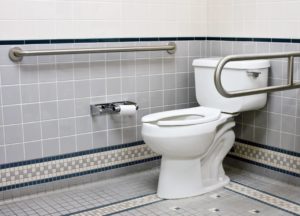Blog
3 Things to Understand About Grab Bars
In the US, at least one in four older individuals will sustain a fall in the home in any given year. This kind of accident can cause head injuries, hip fractures, and other serious bodily damage. However, younger people who struggle with balance problems, lower body weakness, and other ailments may also face fall risks.
If you or someone you love could use some assistance staying stable when upright (without necessarily calling for someone’s aid), grab bars can prove immensely helpful. Give some thought to the following three points as you consider whether to add grab bars to your home and what kinds might do you the most good.
1. Grab Bars Come in Different Orientations
Grab bars can attach to walls or other sturdy surfaces in a horizontal, vertical, or diagonal orientation. While all three types of grab bars can help people sit up, sit down, or stay securely on their feet, your particular challenges in different parts of the home may prompt you to choose one type over the others.
Horizontal grab bars allow you to push yourself up from (or settle down into) a sitting or reclining position. You may find them especially helpful when you need to get in and out of a wheelchair or tub. The horizontal orientation also lets you turn your body safely while standing. However, it can also place stress on arthritic hands.
Vertical grab bars offer a more comfortable grip than horizontal grab bars if you have hand problems. However, they can only keep you stable in that one specific spot in the room, instead of giving you something to grip as you walk. Diagonal grab bars also offer greater hand comfort, but at an increased risk of hand slippage.
2. Grab Bars Can Attach Permanently or Temporarily
Grab bars that attach permanently to your walls with mounting fasteners provide rock-solid, dependable support as long as your installer does the job properly. However, you might worry that these additions will affect the resale appeal of your home, or you might want to take your grab bars with you when traveling.
Suction-cup mounted grab bars offer an easily detachable alternative to the permanent variety. However, you should only depend on such grab bars for light stability assistance, not for bearing your entire weight. You must also take care to attach these grab bars to non-porous surfaces (as opposed to drywall) to ensure a tight seal.
3. Grab Bars Can Work in Any Part of Your Home
When you envision grab bars in a private residence, you may automatically think of installing them in your bathroom first. Grab bars strategically placed in your shower enclosure, next to your tub, or on both sides of the toilet can certainly help you prevent slips and falls in this room. However, they can also enhance your safety elsewhere.
Consider attaching a vertical grab bar next to your front door. This handy addition can help you remain secure and stable as you answer, open, or close the door. You might also run horizontal grab bars along your hallways for safer passage through the house. A grab bar along your kitchen counter can help you in that room as well.
Corner Home Medical sells a variety of grab bar products to help our customers cope with a wide range of needs and challenges. Browse our options and order your ideal grab bar solutions today.

